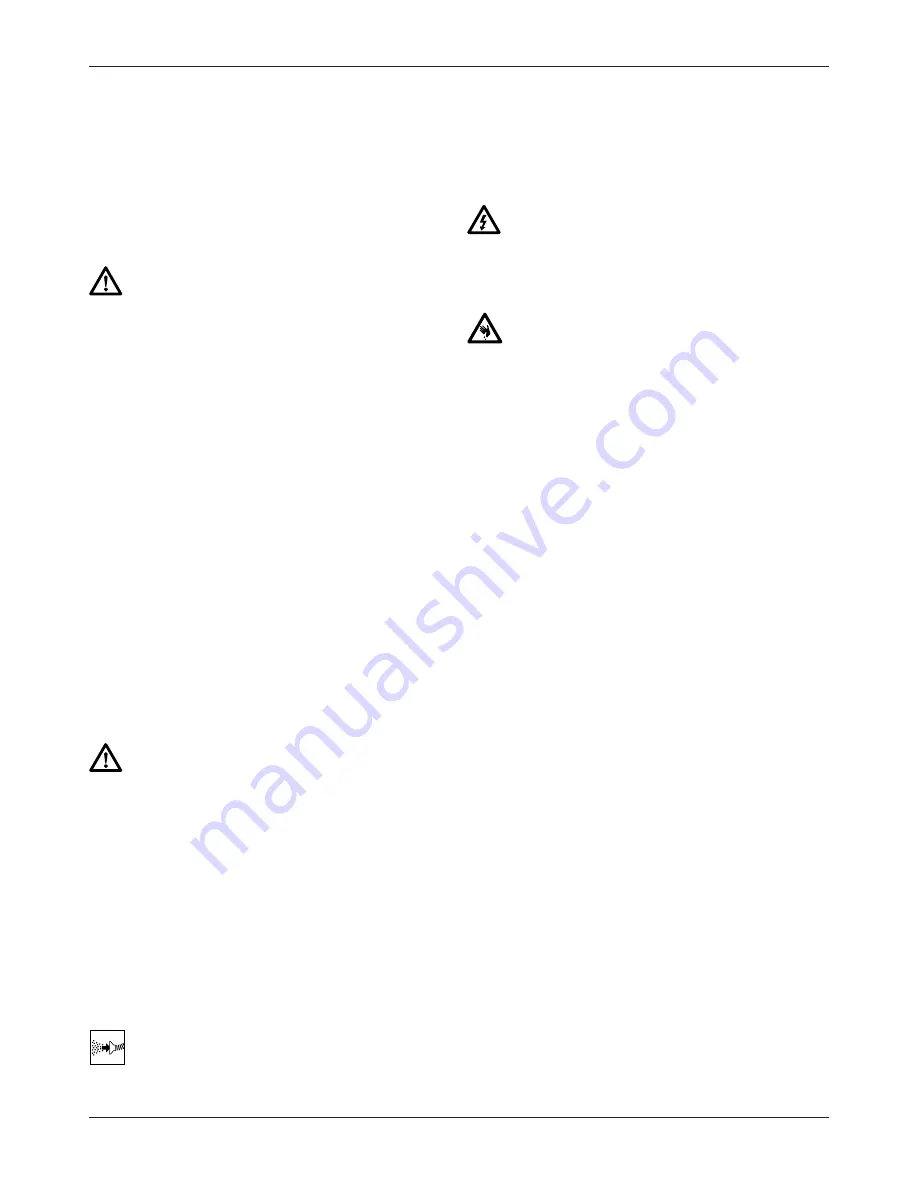
26
en - 7
E N G L I S H
• Switch ON and
slowly
pull the blade though the fence and the workpiece.
• Return the blade to rest position and switch OFF.
Mitre cuts (fig. A1 & O1)
• Release the mitre latch lever (9) and the mitre clamp lever (10) (fig. A1).
• Swing the arm to the required angle on the mitre scale.
• For 45° left or right, engage the mitre latch lever (9) and lock with the
mitre clamp lever (10).
• For intermediate angles, use the mitre clamp lever only.
• Proceed as for cross-cutting.
In the case of left-hand mitre, use the rear fence position.
Bevel cuts (fig. A1, G2 & O2)
• Set the arm as for a 0° cross-cut.
• Raise the blade well above the table surface.
• Release the bevel clamp (20) and pull out the bevel latch (22) (fig. G2).
• Tilt the motor to the required angle on the bevel scale (21) (fig. A1).
• For 90° or 45° right, engage the bevel latch (22) and lock with the bevel
clamp (20).
• For intermediate angles, use the bevel clamp only.
• Proceed as for a vertical cross-cut.
Ripping (fig. H2, J1 & J2)
The motor can be locked in in-rip or out-rip position as shown in figures J1
& J2 to adapt the machine to narrow and wide workpieces respectively.
• Lock the yoke in pulled out position using the riplock.
• Release the yoke clamp lever (23) and press the yoke latch (52) to rotate
the motor to the appropriate position until it locks in place (fig. J1).
• Tighten the yoke clamp lever (23).
• Position the yoke along the arm for the desired width of cut, using the
rip scale (76) and lock it in position using the riplock.
• Adjust the blade guard as described above and turn the dust extraction
adaptor (58) away from your face (fig. H2). Remember that ripping
requires the use of the riving knife (61) and the anti-kickback fingers (59)
(fig. J2).
• Slowly feed the workpiece into the blade, keeping it firmly pressed onto
the table and against the fence. Allow the teeth to cut and do not force
the workpiece through the blade. The blade speed should be kept
constant.
Always use a push stick.
Bevel ripping
• Set the machine in the bevel crosscut position.
• Rotate the yoke into rip position.
• Position the yoke for the correct ripping width.
• Angle the anti-kickback fingers so that they will be flat on the
workpiece and lower the riving knife.
• Proceed as for ripping.
Compound mitre
This cut is a combination of a mitre and a bevel cut.
• Set the required bevel angle.
• Swing the arm to the required mitre position.
• Proceed as for mitre cuts.
Always switch OFF the tool when work is finished and before unplugging.
Dust extraction (fig. H1)
The machine is provided with a dust extraction adaptor (58).
• Whenever possible, connect a dust extraction device designed in
accordance with the relevant regulations regarding dust emission.
• When cross-cutting, position a dust collection chute (option) behind the
line of cut.
Optional Accessories
Prior to assembling any accessories always unplug the machine.
The Dado head (fig. F1, P1 & P2)
Figure P1 shows the parts composing the dado head. The dado head
allows to cut wide, deep cuts in one pass.
Sharp edges.
Mounting the dado head
• Remove the blade guard assembly and the blade.
• Place one cutter blade (94) onto the shaft, making sure that the teeth
point downwards.
• Mount the required number of intermediate blades (95) to achieve the
required width of cut and finally the other cutter blade (94).
• Secure the dado head using the standard arbor nut (38) (fig. F2).
• Remove the riving knife and its support bracket from the blade guard
assembly and mount the guard.
• Lower the dado head into position for the depth of cut required.
Using the dado head
- In crosscut or mitre position
• Adjust the anti-kickback fingers up and out of the way.
• Adjust the finger guard correctly.
- In ripping position
• Adjust the anti-kickback fingers correctly.
Traverse control (fig. A1, K, Q1 - Q3)
The traverse control (96) guarantees optimum results in applications where
a consistent, even feed rate is important.
Mounting the traverse control
• Remove the return spring (89) in figure M.
• Remove the yoke travel stop (14) in figure A1.
• Mount the rear flat bracket (97) and the yoke travel stop as shown in
figure Q2.
• Loosen the grub screw (98) in the knurled knob (106) using an Allen
key and unscrew the knurled knob (fig. Q3).
• Loosen the grub screw (99) in the rear support (100) and pull the
support off the rod.
• Pass the cylinder (101) through the cylinder clamp (102) (fig. Q1).
• Position the cylinder clamp (102) over the riplock (15) and tighten the
grub screws in each side of the mounting (103).
• Reassemble the rear support (100) and the knurled knob (106) and
tighten all screws (fig. Q3).
• Position the rear support (100) as shown (fig. Q3) and tighten the grub
screw (99).
• Push the roller head to the rear and position the cylinder in its clamp
(102) as far to the rear as possible. The end of the rod should not
touch the bleed bolt in the rubber bellows, when the bellows (104) are
compressed. Check the position by pressing the bleed bolt.
• Tighten the screw (105) in the cylinder clamp.
• Set the traverse speed using the knurled knob (106).
Bleeding the traverse control
After refilling or replacing the oil in the traverse control, the air must be
expelled from the system.






























